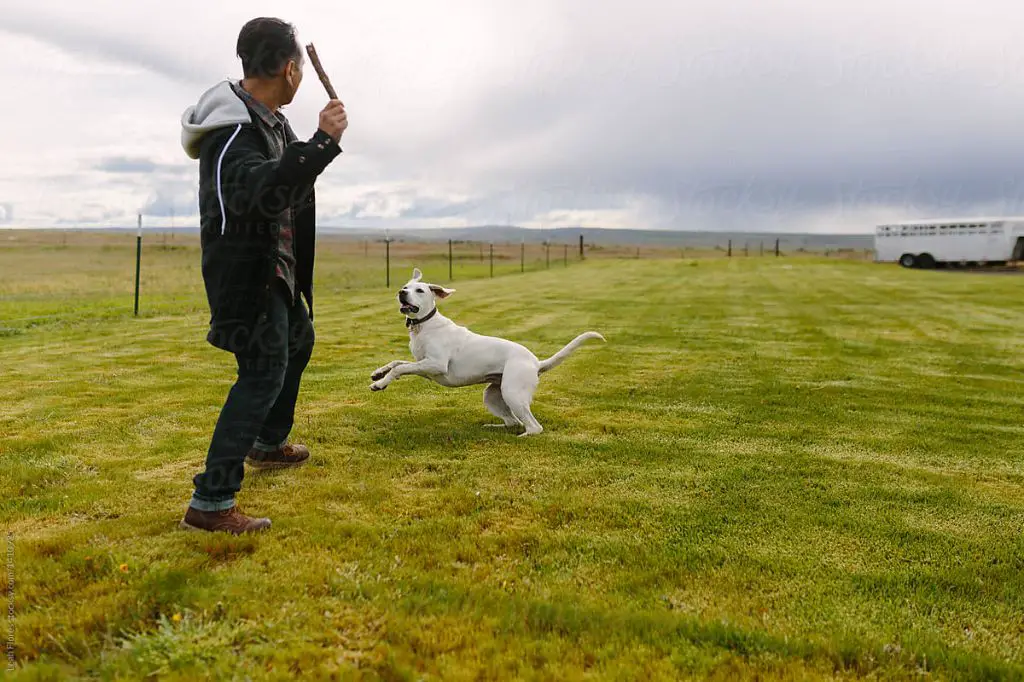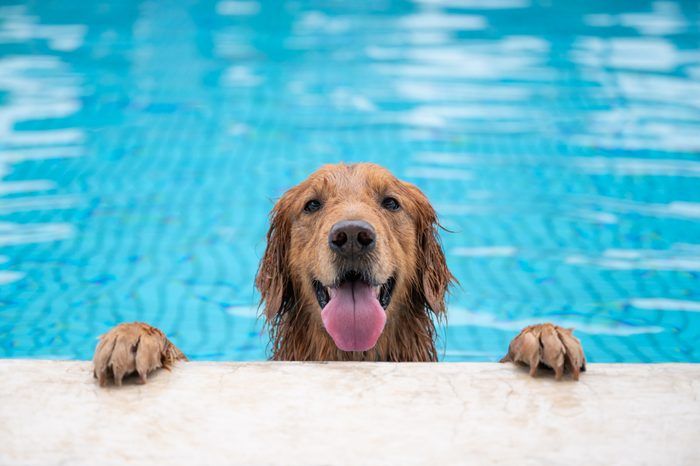Dogs Require More Activity
Dogs have high exercise needs that require daily walks and interactive playtime with their owners. As energetic animals bred for work and companionship, dogs need sufficient physical and mental stimulation to stay happy and healthy. Simply letting a dog out in the yard is not enough – they need substantial walks, jogs, or runs every day. Additionally, dogs enjoy playing fetch, tug-of-war, and learning new tricks and commands during training and bonding sessions with their owners. Dog owners must commit time and energy every day to meeting their dog’s exercise requirements through walks, playtime, obedience training, or other vigorous activities.
Dogs Must Be Taken Outside
One of the main reasons dog owners get more exercise than lizard owners is that dogs need to be taken outside regularly to relieve themselves, get fresh air, and mental stimulation. Dogs cannot simply go to the bathroom inside the house and need to be taken outside frequently throughout the day for potty breaks. These routine walks give dogs enrichment and exercise while allowing them to take care of necessary bodily functions.
In addition to bathroom needs, dogs benefit mentally and physically from being brought outside. The sights, sounds, and smells of the outdoors provide mental stimulation that keeps dogs engaged and active. Short walks around the neighborhood or trips to the park allow dogs to explore new environments. Furthermore, the fresh air and vitamin D from the sun are healthy for dogs. So dog owners must commit to regular outdoor time for their pet’s well-being.
Lizard owners do not need to take their pets outside. Lizards can sufficiently get their needs met inside an enclosure or tank. While some lizard owners may occasionally take their pet outside for supervised time, this is not a daily requirement like it is for dogs. The obligation to take dogs outside multiple times per day for walks, bathroom breaks, and fresh air contributes to dog owners getting more exercise.
Dogs Enjoy Interactive Play

Dogs thrive on interactive playtime with their owners. Activities like playing fetch, tug of war, or chasing games provide both physical and mental stimulation for dogs. Unlike lizards who are mostly solitary, dogs are pack animals who crave attention and engagement. Playing together strengthens the bond between a dog and their owner.
Dog owners often find themselves running around as their energetic puppy or dog brings them toys to throw or ropes to tug. The back and forth movement involved in interactive games gets dog owners moving and burns calories. A simple game of fetch requires the owner to repeatedly bend, throw, and retrieve, working multiple muscle groups. These types of vigorous activities with a pet are fun ways for owners to increase their daily physical activity.
Additionally, going to a dog park or taking a dog to an open field provides even more opportunity for active play. Dogs enjoy chasing and being chased when playing with other dogs. Owners can run around with their pet or throw balls and flying discs for them to catch. The time spent playing with a dog encourages more exercise for their human.
Dogs Need Obedience Training
Attending obedience classes provides mental and physical exercise for dogs and owners. Obedience training is a joint activity that requires participation from both the dog and the owner. For the dog, obedience training provides mental stimulation as they learn commands and proper manners. The training sessions require focus and attention as the dog practices skills like sitting, staying, and walking calmly on a leash. Obedience training provides much needed mental exercise, especially for high energy and working breeds.
For owners, participating in obedience training requires physical movement and activity. Owners must maneuver around the training space with their dog, practicing walking patterns and changes in direction. Giving hand signals and commands also requires body movement. Obedience training keeps the owner engaged as they learn how to properly communicate cues and directions. The training leads to increased daily walks and playtime because it establishes control and polite leash skills.
Dogs Can Join Owners on Jogs
Many owners find that their dogs make excellent companions for jogs and runs. Dogs inherently have more energy than lizards and desire frequent exercise. They enjoy accompanying their owners on cardio activities like jogging, going for runs, or hiking. The outdoor time serves as both bonding and exercise for dogs and owners.

Most dogs can build up endurance to last for 30 minutes or more of jogging. Some athletic breeds like Labrador Retrievers or Border Collies can even join owners who are training for 5Ks, 10Ks, or half marathons. The dog-human jogging team provides a fun, engaging way to stay active together. It’s an exercise that suits a dog’s natural energy and needs.
In addition to physical activity, bringing dogs jogging allows them to explore new outdoor smells and sights. The combination of running and environmental stimulation makes for an enriching experience. Dogs tend to be quite excited and enthusiastic when their owner invites them along for a run. With some obedience training, most dogs can learn to jog properly on a leash without pulling or tangling their owner.
Dogs Require Exercise Variety
While lizards may be content sitting in their terrarium all day, dogs thrive on exercise variety to keep their bodies and minds engaged. Taking dogs on the same short walk around the neighborhood day after day can become monotonous for energetic canine companions. Varying a dog’s exercise regimen is key to providing fulfilling physical and mental stimulation.
Dog owners can switch up their dog walking routes, go on hiking adventures, take their pup to the park for playtime, and get them in the water for a swim. The possibilities for varied fitness activities are endless with a dog. Incorporating new environments, smells, sights, and experiences into a dog’s exercise routine keeps their brain working and prevents boredom. It also allows dogs to practice different motor skills as they adjust to new terrain.
The diversity of exercise dogs need also motivates owners to stay active. Dog parents have to get up and participate alongside their pets. The responsibility of providing an enriched physical routine for one’s dog encourages more human movement and engagement than the simple care required by a sedentary lizard.

Lizards Have Simple Habitats
Lizards are normally kept in small, enclosed spaces like terrariums or tanks. These basic habitats limit a lizard’s opportunities for exercise and activity compared to a dog. The average terrarium is anywhere from 10 to 40 gallons in size. Most pet lizards have a basking area, a hiding place, some foliage or branches, a water dish, and a substrate like reptile carpet or bark chips. This simple setup only provides enough room for a lizard to move between basking under a heat lamp, resting in a hide, climbing on branches, and digging in the substrate. The small habitat doesn’t require much maintenance from owners aside from occasional spot cleaning, so lizards don’t need to be let out of their enclosures. The lack of space and enrichment in a terrarium prevents lizards from being very active compared to a dog that has free range of a yard or home.
Lizards Don’t Need Walks
One of the biggest differences between owning a dog versus a lizard is that lizards do not need to be taken outside for walks or to relieve themselves. Dogs require daily outdoor walks for exercise and bathroom breaks. As social pack animals, dogs enjoy and benefit from these outdoor excursions with their owners.
In contrast, lizards are solitary reptiles that prefer to stay within their enclosures. Their exercise comes from climbing branches, basking under heat lamps, and hunting live insects. Lizards relieve themselves in their habitats and do not need to be taken outside. The lizard owner therefore does not need to take their pet outside for daily walks and bathroom breaks like a dog owner.

Lizard Exercise is Self-Directed
Unlike dogs, which often require exercise directed by their owners, lizards are able to get most of their needed activity through self-directed methods within their enclosures. Lizards are coldblooded animals that require access to heat sources like sunlit rocks or heating lamps in order to maintain proper body temperature. As a result, lizards will spend much of their time moving from heated basking areas to shaded hides as they thermoregulate. This movement provides them with sufficient physical activity. Lizards also enjoy climbing branches, digging, and exploring their habitats. These behaviors allow for exercise through free movement rather than walks, play, or training. With appropriate heating and habitat enrichment, lizards can engage in natural activities that exercise their bodies without needing direct interaction.
Bonding Differs for Lizards
Unlike dogs, lizards do not form strong bonds with their owners that encourage joint activity. Lizards are solitary creatures by nature and do not crave the same companionship and affection from their owners that dogs do. While some lizards may become accustomed to handling, they do not get excited about going on walks or playing fetch with their owners.
The lack of a human-lizard bond means lizard owners do not feel compelled to take their pet out for walks, runs or other vigorous exercise. Lizards are content with limited interaction as long as their basic needs are met inside their habitat. With less motivation for joint activity, lizard owners are likely to get less exercise than dog owners who feel obligated to walk, exercise and play with their pets daily.